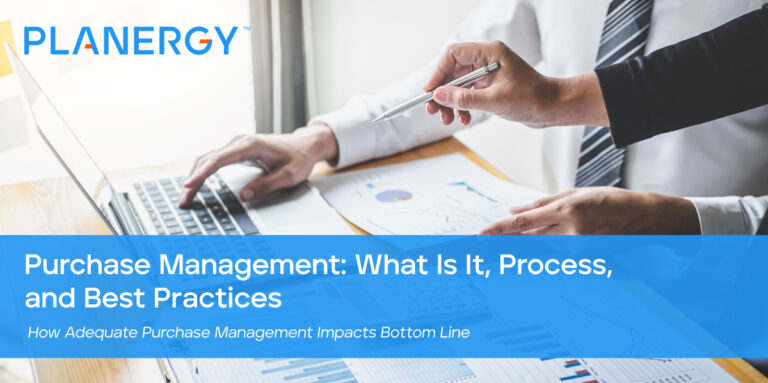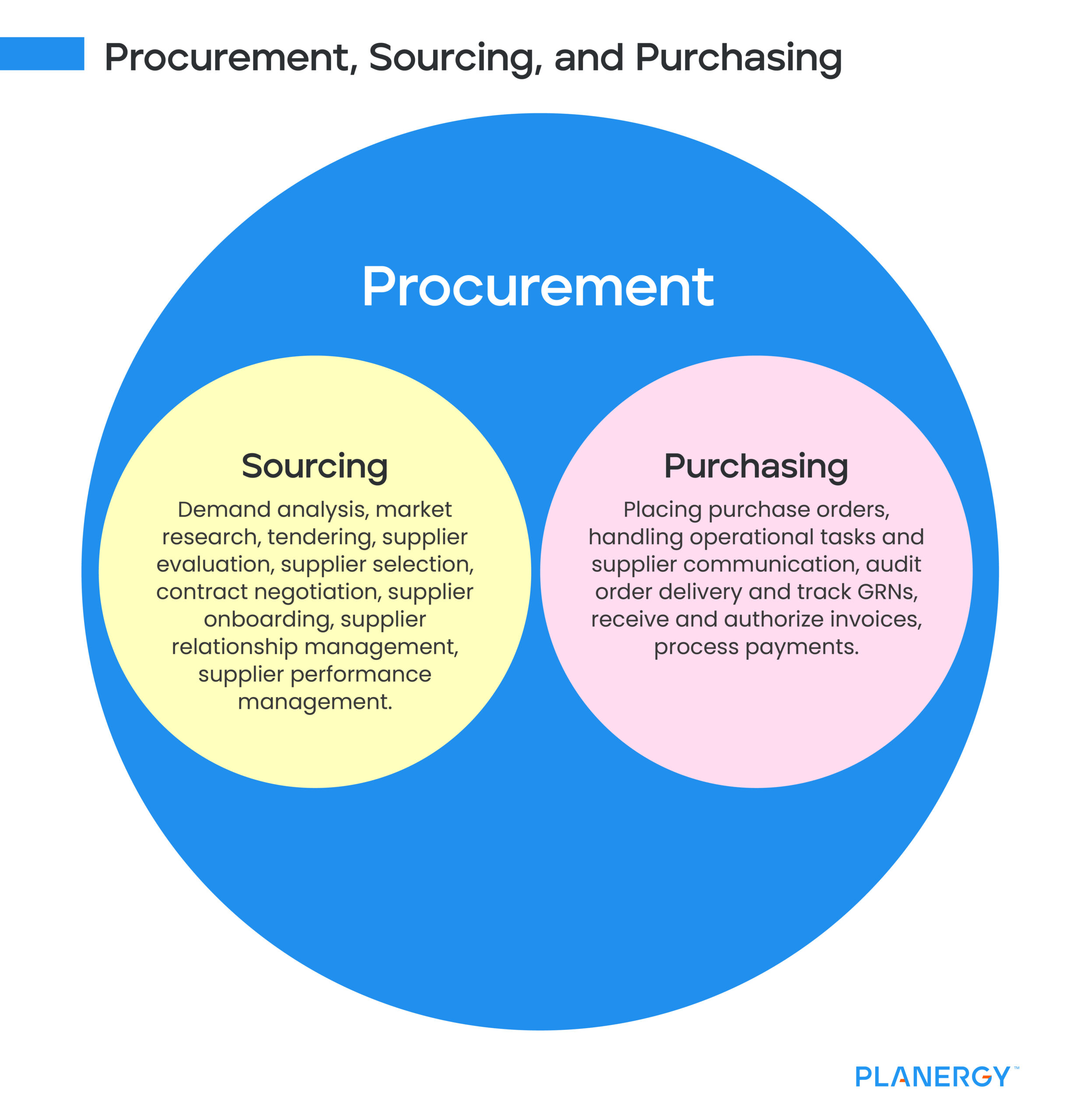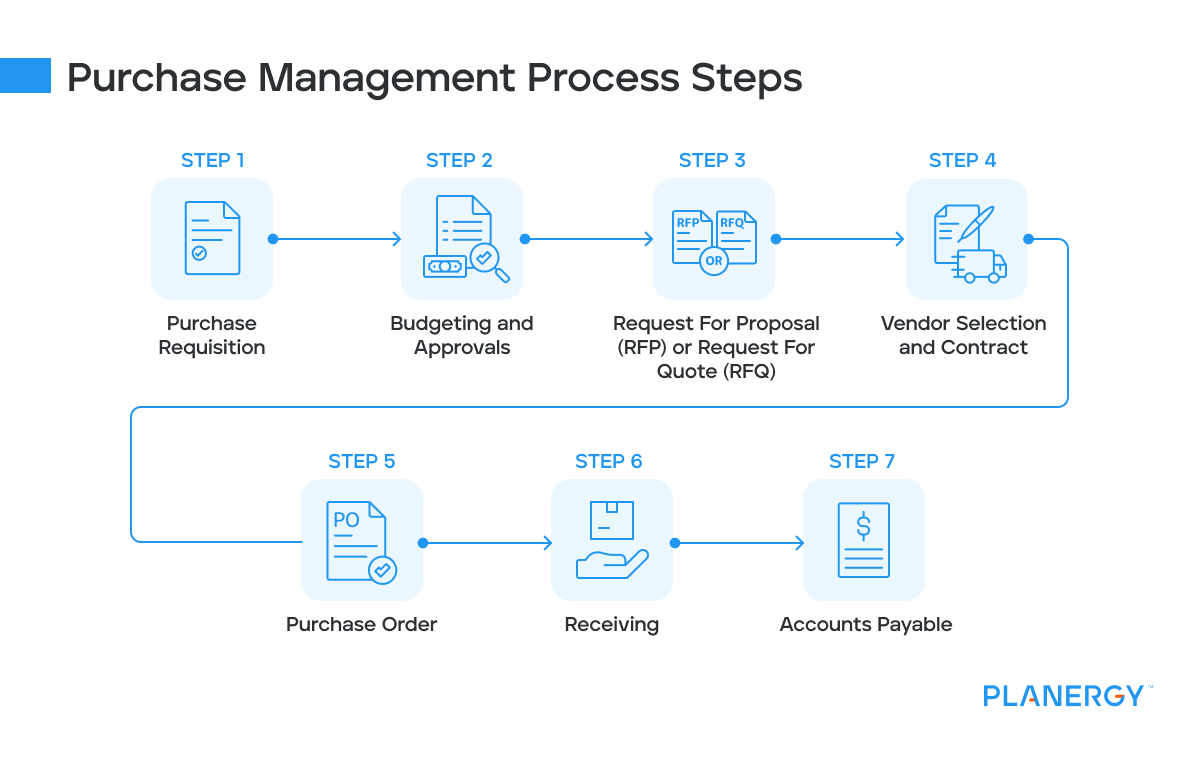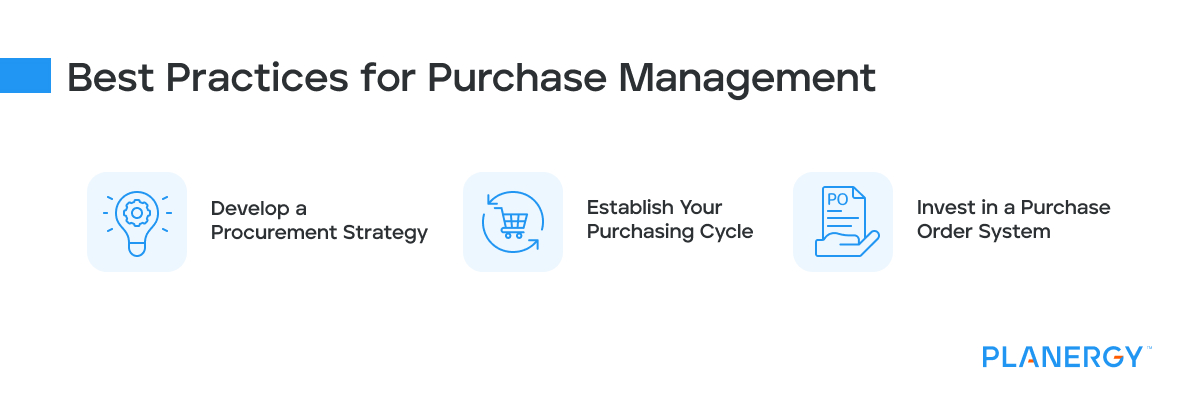The purchase management process is a cycle that goes from an internal need to external payment and involves everything in between.
While different organizations will have different ways of managing purchases, the purchase management process typically follows the seven steps below.
Note that this is the process for managing first-time purchases for important needs. These steps are intended to set your company up for a lasting supplier relationship.
Once you go through this process once and do it right, you should expect to eliminate steps 3 and 4.
-
Purchase Requisition
Every purchase starts with a need and a purchase requisition is how teams state their needs and request internal approval.
A requisition is typically a paper or electronic form that outlines the exact requirements for the purchase and a justification for the expense.
Requisitions are easier to manage with procurement software than with paper forms or Excel.
-
Budgeting and Approvals
Once the requisition is received, managers and procurement teams will review it to ensure it meets a viable need and check that there is enough room in the budget to make the purchase.
In some cases, team managers will be the final decision-makers in the approval process, in other cases, it will be the procurement team itself.
-
RFP or RFQ
Some, but not all, purchases will require a Request for Proposal (RFP) or Request for Quote (RFQ), which are similar but not exactly the same.
These requests will go out to all relevant suppliers and ask them to submit a quote or proposal for the required needs.
Alternatively, some companies skip this step by reviewing supplier catalogs or reaching out to them directly.
-
Vendor Selection and Contract
Once RFPs or RFQs are received (or not if skipping that step), companies will review them for the best terms and ability to meet their needs.
Price will not be the only deciding factor, as delivery speed, quality, ESG procurement compliance, and a number of other factors can affect which vendor is picked.
Organizations can also draw up a contract at this stage of the process that lays out all the details for payment terms, delivery expectations, quality, and more.
However, this isn’t a requirement and can be worked out later on if there is an immediate need to move forward with the purchase.
-
Purchase Order
To make the purchase official, organizations will send a purchase order (PO), which an official document that states all the information needed for the purchase: quantity, price, delivery address, expected delivery date, payment terms, etc.
Once the vendor confirms agreement with the PO, it becomes a legally binding document to ensure that the vendor delivers and the purchaser pays.
-
Receiving
This is the step where goods or services are delivered. It’s important for teams to check that the delivery meets the quantity, quality, and other requirements detailed in the purchase order and contract.
The vendor will also send an invoice, which will be reconciled and paid in the next step if the order meets their expectations.
-
Accounts Payable
Once the order and invoice have been received, the accounts payable team takes care of the payment.
However, they will check that they aren’t paying extra or paying for unreceived items by using a process called 3-way matching for invoice approval.
In this process, they verify the consistency of 3 documents: the PO, receipt, and invoice. If all three match, then they can pay the invoice. If not, they will send it back for clarification.
Using a procure-to-pay system for purchasing and accounts payable together makes it much easier to match these documents and ensure that payments are made swiftly and for the correct amount.
Note that throughout this process, your organization can change requirements, find new insights from market research, switch suppliers, or do anything you can think of for more favorable terms.
Procurement teams should always be on the lookout for ways to extract more value from the purchasing process.







